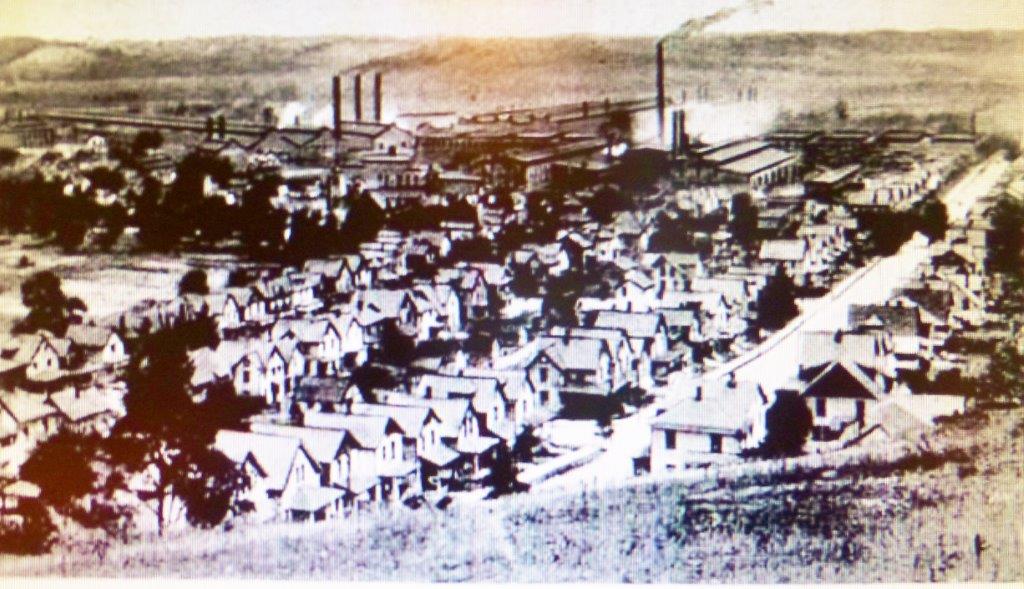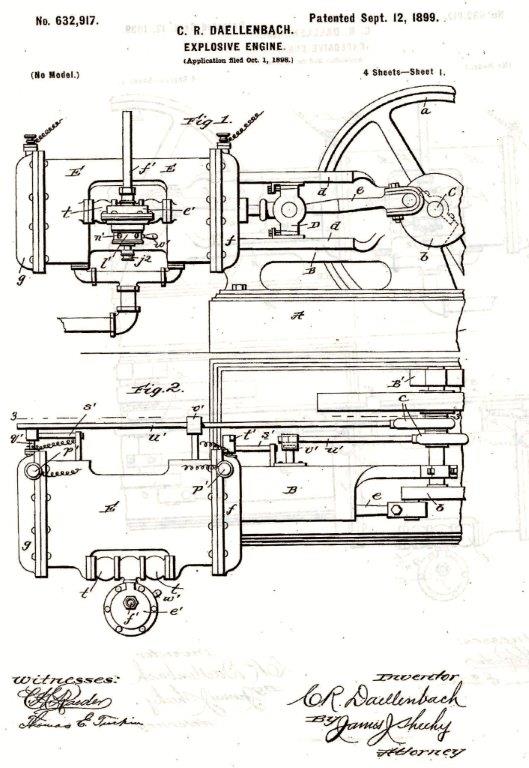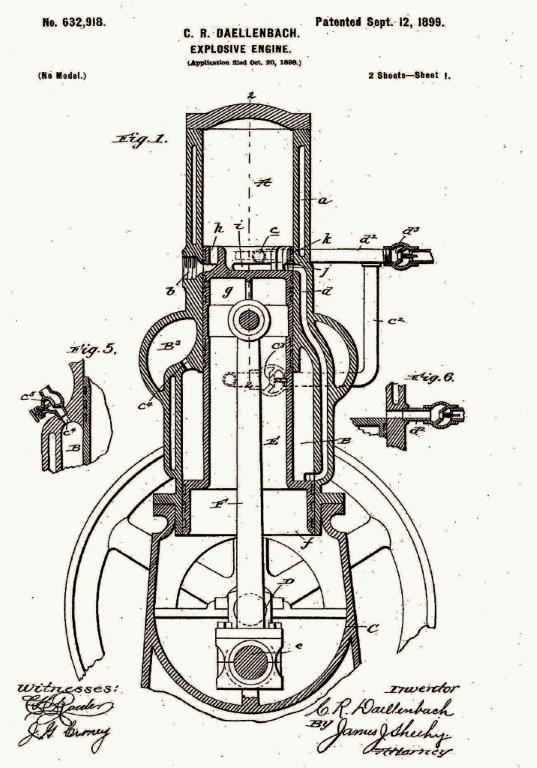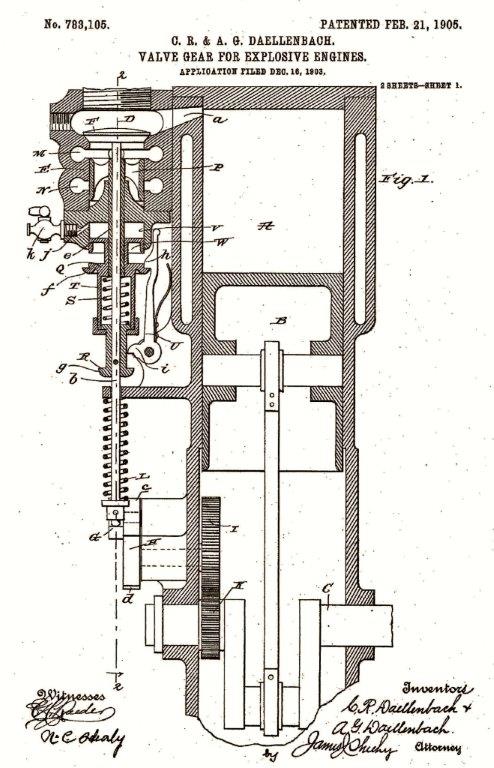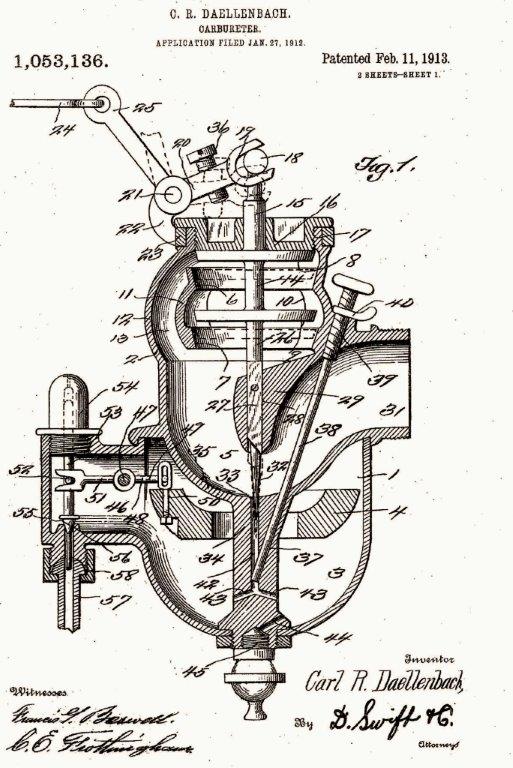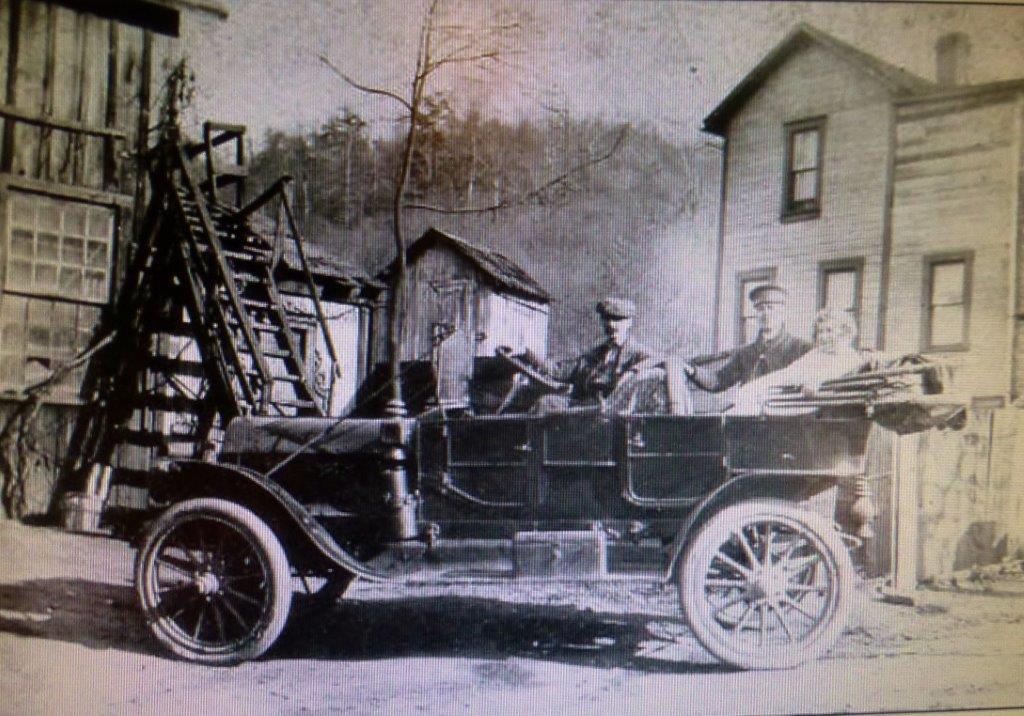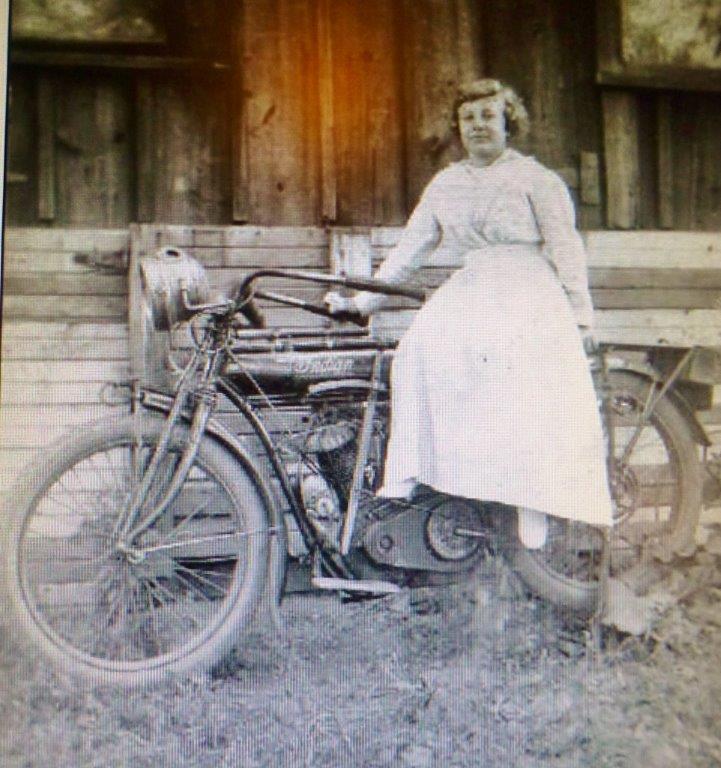|

November 2015
The Ellwood City Mystery
By Paul Harvey
A while ago, a friend asked me if I knew
anything about the Ellwood City gas engine. I replied that I was aware
of it from something I had read years ago, but otherwise I knew
nothing. I had never seen one, nor heard of one. Hmm! This spark sowed
a seed, so I proceeded to seek some information. This is the story of a
gifted inventor who, like so many others of his time, seemed to proceed
to the next venture before completing his present one.
Today Ellwood
City is a pleasant town of 7,500 persons,
located in Beaver and Lawrence
Counties of
Pennsylvania. Its origin was the idea of
industrialist Henry W. Hartman, who formed the Pittsburgh Company in
1889. He created a "company town" for his new and thriving industry,
and the venture certainly prospered. Ellwood
City soon became the "birthplace of the
seamless tube industry." The new town grew rapidly with schools,
stores, banks, and churches, and especially the massive mills.
Photo 1, from Everett E. Bleakney, Jr's book, shows a very
industrial Ellwood
City. Note the huge mills in the
background, and the streets of similar houses.
Fifth Street, downtown, is viewed in
Photo 2.
Opportunity for invention was
here.
The only image of an Ellwood City engine
was found in Charles Wendel's, American Gasoline Engines Since
1872. Displayed in Photo 3, it appears to be a very
practical machine. However, a search of the patents did not reward me
with anything similar. Charles R. Daellenbach had many patents, and two
were assigned to the Ellwood City Gas Engine Company. These were #
632,917, seen as Photo 4, and #
632,918, seen as
Photo 5. Both patents were awarded on September 12, 1899. They seemed impractical and
not similar to the produced engine. The first of the two was a double-acting engine, and the second was a very odd two-cycle utilizing a
stepped piston.
Charles Rudolph Daellenbach was born in
Switzerland on November 20, 1868, and immigrated to the
United States in 1885. He married Dora
Price on December 29, 1892,
and settled in Ellwood
City. A bit confusing, he is referred to as
both Charles and Carl, the latter mostly in later years. Wikipedia
notes that Carl is an American variant of the German Charles.
For this article he will be referred to as Carl. He had a total of 17
patents, starting in 1895 and concluding in 1928.
Carl established the Ellwood City Gas
Engine Company in 1899. The New Castle News of March 6, 1901 describes a fire that
completely consumed the new firm. All engine production ceased at that
time. The New Castle
News, June 4, 1902, notes that Carl went to Braddock,
Pennsylvania, to form the new Daellenbach Gas
Engine Company. There he partnered with G.E. Turner. This firm was
short-lived and soon replaced by the Daellenbach-Turner Gas Engine
Company. Turner was well known in the gas engine world; partner in the
firm of Turner-Fricke, involved with Turner-Palm, and now with
Daellenbach. Soon, the New Castle News of August 13, 1902 concludes, the
Daellenbach-Turner Company will locate in
Ellwood City
to manufacture gas engines. Note Photo 6, patent #
783,105, for this design. Interestingly, this patent was
authored jointly by Carl and Arthur G. Daellenbach and finally awarded
on Feb 21, 1905. There is no evidence
that the firm ever produced an engine. The New Castle Weekly Herald,
May 3, 1905,
notes that the Ellwood City Gas Engine Company was sold to the Pitt Mfg.
Co. for $2,500.00. No further gas engine manufacturing was done there.
A Braddock city directory of 1906 lists
Carl living there and employed in a steel fabricating shop. Continuing
to invent, he was granted four more patents while there. Seemingly his
Braddock venture was unsuccessful and he returned to
Ellwood City
about 1911. He dissolved his relationship with the Braddock Gas Engine
Company; nothing more is known of this concern. When back in
Ellwood City,
he was granted patent #
1,053,136,
February 11, 1913, for a carburetor for automobiles. See
Photo 7. He set up a garage to make these carburetors and
repair automobiles. He spent the rest of his life in this occupation.
The New Castle
Herald of April 19,1917 lists the Daellenbach
Garage Company selling automobiles, motorcycles, and supplies, It was
located on Beaver and Ninth Street
in Ellwood City.
Photo 8 shows Carl and his daughter,
Lamia, in the back seat of an automobile behind
his garage. Lamia is shown
on an Indian Motocycle that her dad sold in Photo 9. Note
that the spelling, "motocycle" is correct for the Indian marque of that
time.
As did so many other gas engine makers of the
turn of the twentieth century, Carl finally found success with the new
automobile. The gas engine market was very demanding; needing a good
design and a designated market. Very few makers were able to find
this. However, the new automobile was here to stay and garages were
needed, both for dealerships and repair. It seems that Carl was now
satisfied. The New Castle News of
November 6, 1930 notes that Carl passed away in his home.
He was buried in the North
Sewickley Cemetery.
The author would welcome any corrections
or additions to this story. Coolspring
Power Museum
will feature "One-of-a-Kind" engines for 2016, and it would be great if
an Ellwood City
engine could be displayed.
|

